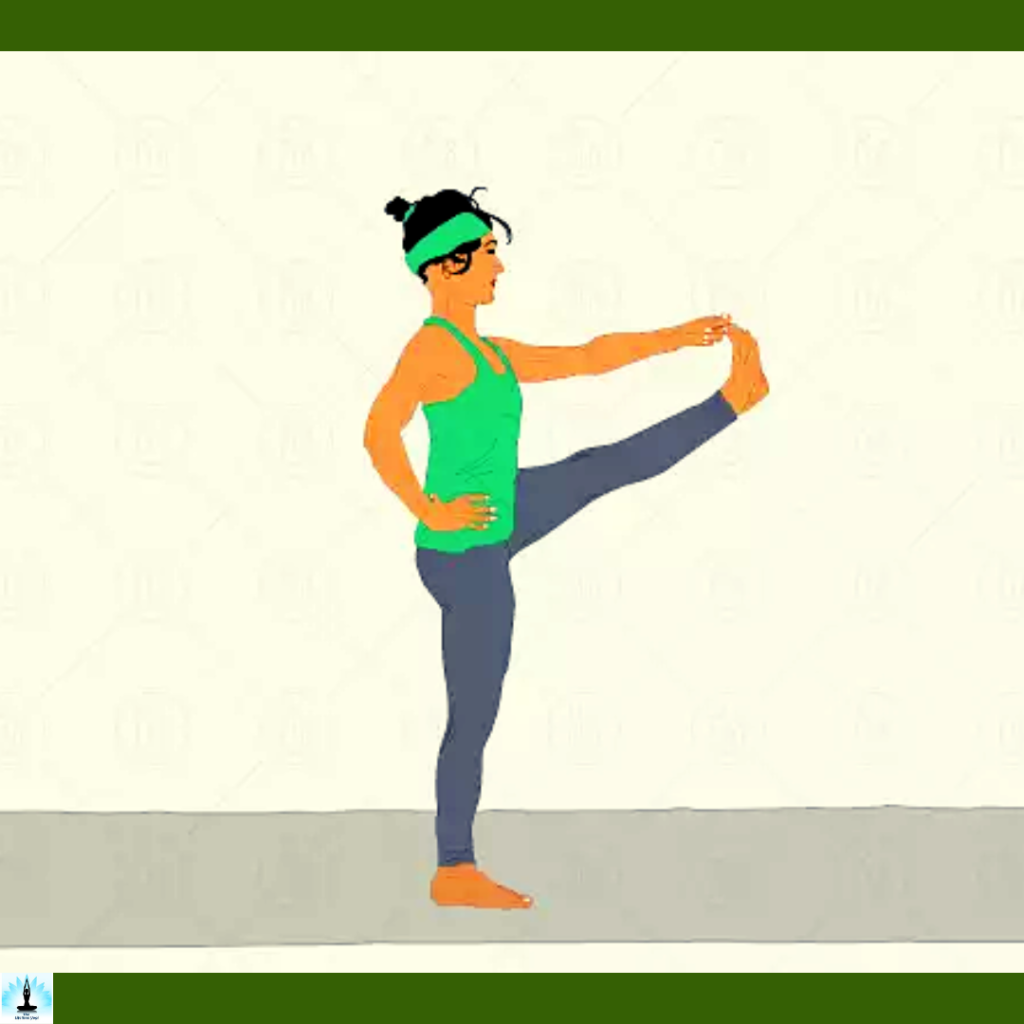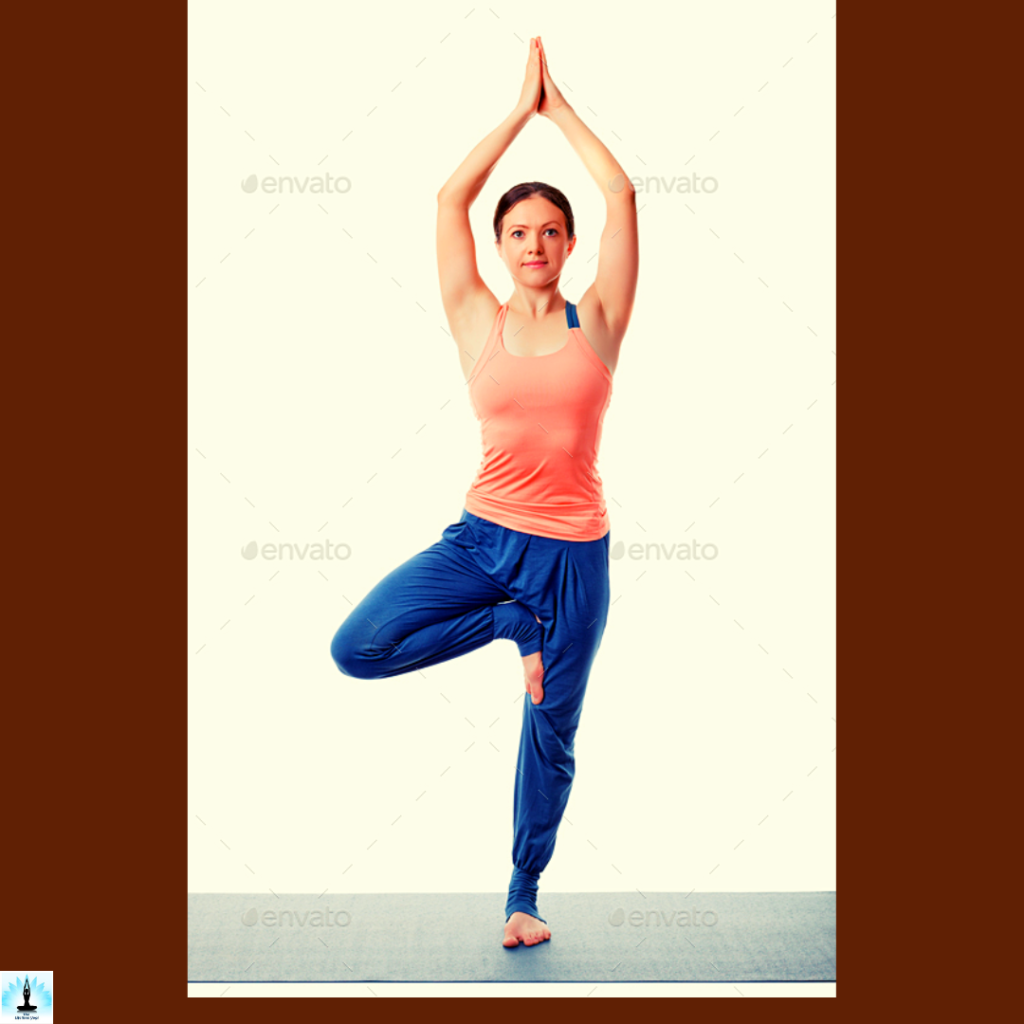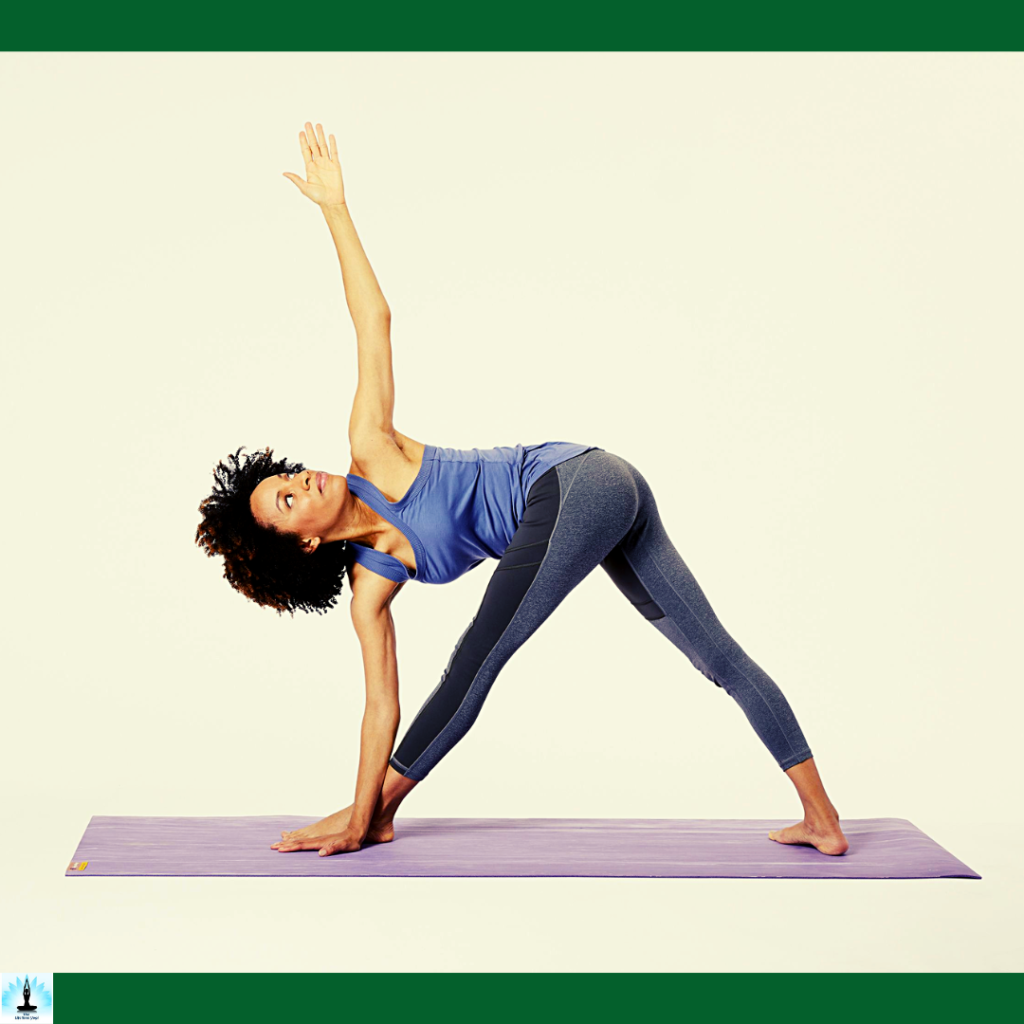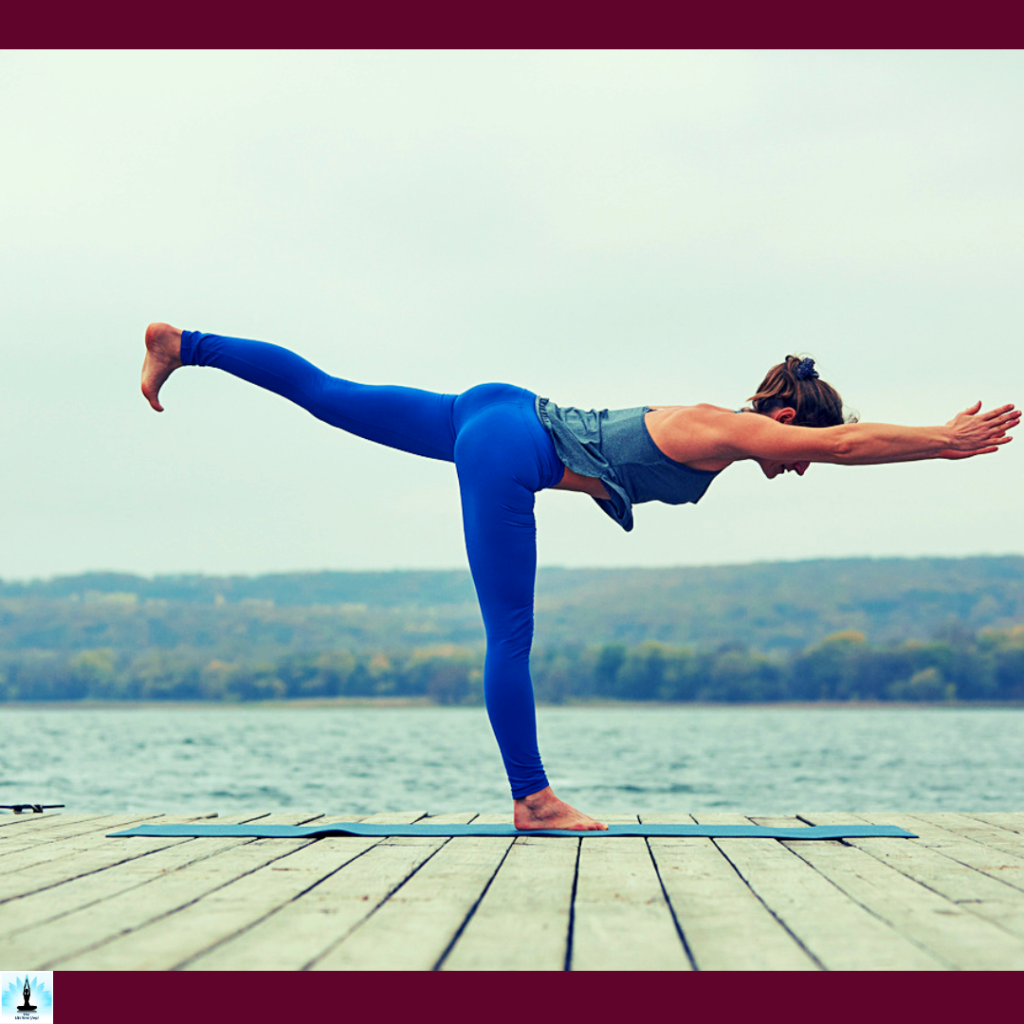Introduction – 8 Top Benefits of Utthita Padangusthasana (Extended Hand-to-Big-Toe Pose)
Utthita Padangusthasana, or Extended Hand-to-Big-Toe Pose, is a graceful asana that combines elements of balance, flexibility, and focus. Rooted in the ancient tradition of yoga, this pose invites practitioners to explore the connection between mind, body, and breath.
As one of the foundational standing poses, Utthita Padangusthasana offers a myriad of physical, mental, and emotional benefits. This comprehensive guide will delve into the intricacies of the pose, exploring its alignment principles, variations, therapeutic applications, and the profound impact it can have on one’s yoga journey.
Table of Contents
The Yogic Philosophy of The Utthita Padangusthasana

The yogic philosophy underlying Utthita Padangusthasana, or Extended Hand-to-Big-Toe Pose, is rooted in the principles of balance, focus, and the harmonious integration of mind and body.
This asana embodies the concept of Sthira (steadiness) and Sukha (ease), emphasizing the importance of finding stability in the midst of challenge. By standing on one leg and extending the other, practitioners cultivate physical and mental equilibrium.
Benefits of Utthita Padangusthasana
Improved Balance and Stability
Utthita Padangusthasana requires concentration and engagement of the stabilizing muscles, promoting enhanced balance and stability. Regular practice strengthens the ankles and develops a heightened sense of proprioception.
Enhanced Flexibility
This pose targets the hamstrings, hip flexors, and muscles around the pelvis, fostering flexibility in the lower body. Regular execution contributes to increased range of motion in the hip joints and improved flexibility in the leg muscles.
Strengthens the Core
The engagement of the core muscles is essential for maintaining proper alignment in Utthita Padangusthasana. This helps strengthen the abdominal muscles, contributing to improved core stability and support for the spine.
Stimulates Digestive Organs
The forward bend aspect of this pose compresses the abdomen, massaging the internal organs and promoting digestion. It can be beneficial for individuals dealing with mild digestive issues.
Alleviates Sciatic Pain
Utthita Padangusthasana provides a stretch to the sciatic nerve and the muscles surrounding it. Regular practice may help alleviate discomfort associated with sciatica by releasing tension in the hip region.
Strengthens the Legs
Utthita Padangusthasana engages the muscles in the standing leg, including the quadriceps and calves. This results in increased leg strength and endurance over time.
Develops Concentration
Balancing on one leg while extending the other requires focused attention and concentration. Practicing this pose regularly enhances mental clarity and concentration skills.
Encourages Mind-Body Connection
As practitioners navigate the physical intricacies of Utthita Padangusthasana, they simultaneously deepen their awareness of breath and body sensations, fostering a stronger mind-body connection on their yoga journey.
Step-by-Step Instructions of Extended Hand-to-Big-Toe Pose

Step 1: Begin in Tadasana (Mountain Pose)
Start by standing tall in Tadasana, with your feet hip-width apart and weight evenly distributed. Engage your thighs, lift your chest, and relax your shoulders. Establish a strong and grounded foundation.
Step 2: Shift Weight to One Leg
Shift your weight onto your left leg while maintaining a stable and active right leg. Feel a connection with the earth through the sole of your standing foot. Engage your core to support the alignment of your spine.
Step 3: Lift and Extend the Right Leg
With a straightened knee, lift your right leg forward. Use the strength of your quadriceps to extend the leg. Ensure that your hips remain level and square to the front. If needed, you can slightly bend the left knee for added stability.
Step 4: Hold the Right Big Toe
Extend your right arm forward and reach for the big toe of your right foot. You can use the peace fingers (index and middle fingers) to grasp the toe. Alternatively, use a yoga strap or belt looped around the foot if reaching the toe is challenging.
Step 5: Straighten the Leg and Align the Torso
Straighten your right leg as much as possible without compromising the alignment of your spine. Simultaneously, maintain a long and neutral spine as you hinge forward from your hips. The goal is to bring your torso parallel to the floor.
Step 6: Open the Right Leg to the Side (Optional)
For a variation, you can open your right leg to the side while keeping the hips square. This variation intensifies the stretch and engages different muscle groups. Only attempt this if you can maintain stability and balance.
Step 7: Hold and Breathe
Once in the full expression of the pose, hold for 20-30 seconds, breathing deeply and maintaining a steady gaze. Use your breath to deepen the stretch and enhance your focus.
Step 8: Release and Repeat
Release the right leg and return to Tadasana. Take a moment to ground yourself before repeating the sequence on the opposite side. Aim for balance and symmetry in your practice.
Tips:
- Keep a microbend in the standing knee to avoid locking the joint.
- Engage your core muscles to support the spine and prevent overarching.
- Soften your facial muscles and maintain a steady drishti (gaze) to enhance concentration.
- Listen to your body, and if needed, use props to assist in the pose.
Advance Variations of Utthita Padangusthasana
Extended Leg Variation
For a more advanced version, once in the full expression of Utthita Padangusthasana, explore extending the raised leg to the side. This variation intensifies the stretch in the inner thigh and challenges both balance and flexibility. Ensure that the hips remain squared to maintain proper alignment.
Binded Hand Variation
Elevate the challenge by incorporating a bind in the pose. While holding the raised big toe, reach the opposite hand behind the back and attempt to clasp the hands. This variation enhances shoulder flexibility and deepens the stretch in the hamstrings.
Revolved Utthita Padangusthasana
Begin in the standard pose, then transition into a revolved version by bringing the extended leg across the body while maintaining the forward bend. Place the opposite hand on the outer edge of the foot or on the floor, twisting the torso. This variation engages the obliques and stimulates spinal rotation.
Floating Utthita Padangusthasana
Elevate the pose by lifting the hands off the floor while holding the raised big toe. This challenges the core muscles and requires greater strength and stability. Keep the spine extended and maintain a steady gaze to support balance.
Therapeutic Applications of Utthita Padangusthasana
Beyond its physical benefits, Utthita Padangusthasana serves as a therapeutic tool for various conditions. The pose promotes strength and flexibility in the legs, making it beneficial for individuals dealing with sciatica or mild back discomfort. Its emphasis on balance and concentration nurtures mental focus, offering a respite from the challenges of a busy mind.
Poses Related to Utthita Padangusthasana
Preparatory Poses of Utthita Padangusthasana
Standing Forward Bend (Uttanasana)

This foundational pose shares the forward bending element with Utthita Padangusthasana. Uttanasana helps stretch the entire back of the body, including the hamstrings, and prepares the practitioner for deeper forward bends.
Tree Pose (Vrikshasana)

Both poses involve balancing on one leg. Tree Pose, however, focuses on grounding through the standing foot while bringing the opposite foot to rest on the inner thigh or calf. It enhances balance and concentration.
Follow-up Poses of Utthita Padangusthasana
Extended Triangle Pose (Utthita Trikonasana)

Utthita Padangusthasana and Extended Triangle Pose both promote stretching and opening of the hips and hamstrings. While the former is a balance pose, the latter involves a wider stance with a focus on lateral extension.
Warrior III (Virabhadrasana III)

Similar to Utthita Padangusthasana, Warrior III challenges balance and strengthens the standing leg. In Warrior III, the raised leg extends backward, creating a straight line from head to heel, enhancing overall stability and focus.
Half Moon Pose (Ardha Chandrasana)

Combining aspects of balance and lateral extension, Half Moon Pose involves stacking one hip over the other while reaching the raised leg and arm skyward. It requires strength in the standing leg and engages the core for stability.
Beginner’s Tip of Utthita Padangusthasana
For beginners attempting Utthita Padangusthasana, focusing on stability and proper alignment is key. Start with a micro-bend in the standing knee to avoid hyperextension and gradually work towards straightening the leg over time.
Use a strap looped around the raised foot if reaching the big toe feels challenging initially. This prop assists in maintaining a connection with the foot while gradually increasing flexibility. Begin with a slight bend in the standing leg, ensuring a stable foundation.
Contraindications and Cautions of Utthita Padangusthasana
While Utthita Padangusthasana offers numerous benefits, it may not be suitable for everyone, and practitioners should be mindful of certain contraindications. Individuals with chronic lower back issues or hamstring injuries should approach this pose with caution, modifying as needed or avoiding it altogether.
Those with high blood pressure are advised to keep the gaze forward instead of looking up to prevent unnecessary strain on the neck. Pregnant individuals should practice with care, ensuring that the standing leg remains stable and avoiding deep forward bends.
FAQs on Utthita Padangusthasana (Extended Hand-to-Big-Toe Pose)
1. Can I Use a Strap for Utthita Padangusthasana If I Can’t Reach My Big Toe?
Yes, absolutely. Using a yoga strap looped around the raised foot allows practitioners to maintain a connection with the foot while gradually improving flexibility. It’s a helpful prop for individuals working on their range of motion.
2. Is Utthita Padangusthasana Suitable for Beginners?
Yes, beginners can practice Utthita Padangusthasana, but it’s essential to start gradually. Beginners might keep a slight bend in the standing knee and use props like blocks or a strap. As flexibility improves, they can work towards straightening the standing leg.
3. I Have Lower Back Pain. Can I Still Practice This Pose?
If you have chronic lower back issues, approach Utthita Padangusthasana with caution. It’s advisable to consult with a healthcare professional or an experienced yoga instructor for personalized guidance and modifications.
4. Can Pregnant Individuals Practice Utthita Padangusthasana?
Pregnant individuals can practice a modified version of Utthita Padangusthasana, keeping the standing leg stable and avoiding deep forward bends. However, it’s crucial to consult with a healthcare provider and a qualified yoga instructor for appropriate adjustments.
5. How Can I Deepen My Practice of Utthita Padangusthasana?
To deepen the practice, focus on engaging the core muscles, gradually straighten the standing leg, and work towards a deeper forward fold. Consistent practice, mindfulness of alignment, and patience in progression contribute to improvement.
6. Are There Any Variations for Utthita Padangusthasana?
Yes, there are variations like using a strap for assistance or exploring the pose against a wall for added support. Additionally, practitioners can progress to advanced variations as they build strength and flexibility.
7. Should I Look Up or Forward During Utthita Padangusthasana?
Individuals with high blood pressure are advised to keep the gaze forward instead of looking up to prevent strain on the neck. Adapting the gaze based on personal health considerations is essential for a safe practice.
8. What Is the Significance of Utthita Padangusthasana in Yoga Practice?
Utthita Padangusthasana helps improve balance, flexibility, and concentration. It stretches the hamstrings, calves, and hips, making it beneficial for overall leg strength and mobility.
9. Can I Practice Utthita Padangusthasana If I Have Knee Issues?
Individuals with knee issues should approach this pose with caution. Keeping a slight bend in the standing knee and avoiding overextension can help protect the knees. Consult with a healthcare professional or yoga instructor for personalized guidance.
10. How Can I Improve My Balance in Utthita Padangusthasana?
Building balance in this pose involves focusing on a stable standing leg, engaging the core, and using a focal point for concentration. Practicing regularly and gradually increasing the duration will contribute to improved balance over time.
11. Are There Modifications for Utthita Padangusthasana If I’m Not Flexible?
Yes, modifications include using props like yoga blocks or a strap. Beginners can bend the raised leg and work on gradually straightening it as flexibility improves. The key is to practice within a comfortable range of motion.
12. Can Utthita Padangusthasana Be Part of a Warm-Up Routine?
Yes, Utthita Padangusthasana can be included in a warm-up routine to prepare the muscles and joints for more intense poses. It helps increase blood flow to the legs and enhances overall flexibility.
13. How Does Breathing Factor into Utthita Padangusthasana?
Coordinate your breath with movement. Inhale as you lengthen the spine, and exhale as you fold forward. Maintaining steady and controlled breathing helps deepen the stretch and enhances the meditative aspect of the pose.
14. Can I Practice Utthita Padangusthasana If I Have a Backache?
If you have a backache, approach this pose with caution. A slight bend in the standing knee and a gentle forward fold can be more suitable. Consult with a healthcare professional for guidance, and consider skipping or modifying the pose if it exacerbates back pain.
Conclusion
Utthita Padangusthasana stands as a testament to the elegance and depth inherent in yoga practice. Beyond its physical attributes, this pose becomes a journey of self-discovery, inviting practitioners to explore the intricate interplay between body, mind, and breath. As one embraces the challenges and joys of Extended Hand-to-Big-Toe Pose, they unlock not only the potential of their physical form but also the transformative power of yoga on a holistic level.
References
- Iyengar 1979, pp. 76–78.
- Saraswati 1996, pp. 300–302.
- Iyengar, B. K. S. (1979) [1966]. Light on Yoga: Yoga Dipika. Unwin Paperbacks.
- Mehta, Silva; Mehta, Mira; Mehta, Shyam (1990). Yoga: The Iyengar Way. Dorling Kindersley.
- Saraswati, Swami Satyananda (1996). Asana Pranayama Mudra Bandha (PDF). Yoga Publications Trust. ISBN 978-81-86336-14-4.
